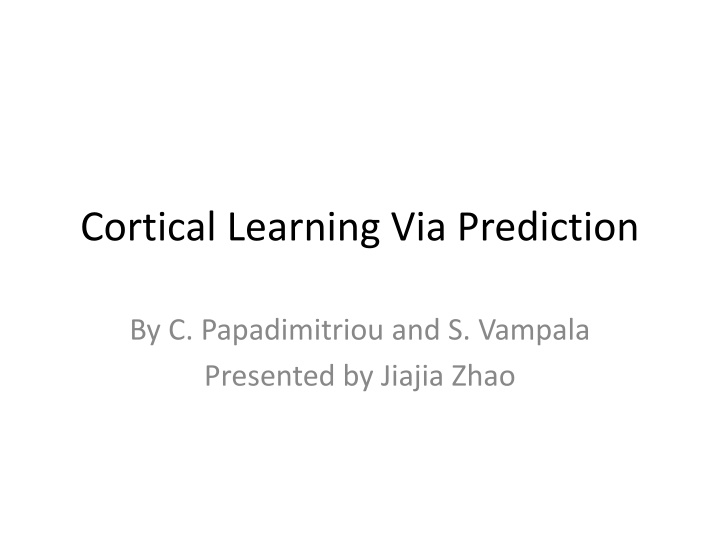
Cortical Learning Via Prediction: Understanding Hierarchical Memorization
Explore the concept of cortical learning via prediction, presented by C. Papadimitriou and S. Vampala. Delve into the problem of synchrony in firing, the creation of PJOIN, and the dynamics of the PJOIN tree for unsupervised learning. Understand how this framework enables hierarchical memorization with minimal control, allowing for the learning of arbitrary length items.
Download Presentation

Please find below an Image/Link to download the presentation.
The content on the website is provided AS IS for your information and personal use only. It may not be sold, licensed, or shared on other websites without obtaining consent from the author. If you encounter any issues during the download, it is possible that the publisher has removed the file from their server.
You are allowed to download the files provided on this website for personal or commercial use, subject to the condition that they are used lawfully. All files are the property of their respective owners.
The content on the website is provided AS IS for your information and personal use only. It may not be sold, licensed, or shared on other websites without obtaining consent from the author.
E N D
Presentation Transcript
Cortical Learning Via Prediction By C. Papadimitriou and S. Vampala Presented by Jiajia Zhao
Problem Synchrony: C = JOIN(A,B) Still want C to fire when the firing of A and B has a small time delay This enables a reasonable time bound in learning hierarchical memorization of arbitrary length items (length n), with minimal control
PJOIN JOIN(A,B) Create PJOIN(A,B)
PJOIN Time 1: A fires Time 2: Cpfires synaptic strengths from A or B to Cpdouble all of C enters state PREDICT-B Time 3: Cpenters state PASSIVE, not responding to downward firings. Bp fires, but not Ap(refactory). Time 4: Bpdownward items predictive parts fire, creating a shared structure. Time x: B fires Time x+1: C fires. A, B, C enter state OPERATIONAL
Unsupervised Learning Through the synaptic changes by PJOIN, we have a dynamic PJOIN tree. A tree corresponds to a pattern, which is a collection of items. Patterns have distinct roots, but can share subtrees. Can think of nodes in the tree as Ap, Bp, Cp Easier to form new pattern, and easy to recognize existing pattern as a learned subtree.
